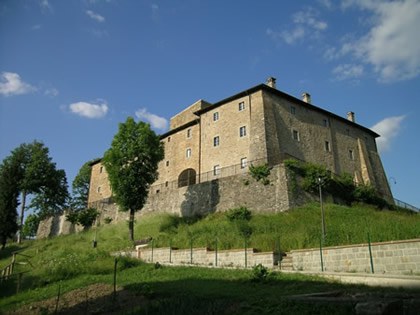Montefiorino
The first part of the defence system to be built was the keep, in about 1170 by Bernardo Montecuccoli, feudal lord of the Abbot of Frassinoro. Between 1235 and 1247, the fortress saw the addition of two more towers and the surrounding walls and the village started to take shape from 1280. Its ownership passed from hand to hand and included people from Modena, Benedictine monks and the Montecuccoli family. Finally, in 1426 after a revolution, the area ended up under the direct dominion of the Este family, the Lords of Ferrara. During World War Two, Montefiorino was the birthplace of the first partisan republic of Italy. Today the memories of that valorous period are preserved and commemorated in the Museum of the Partisan Republic.
Why it’s worth a visit
Montefiorino has a fascinating past and it is therefore the perfect choice for those who love history and culture. The huge fortress is definitely a must-see and today it houses the Museum of the Partisan Republic.
Sites you won't want to miss
The Rocca di Montefiorino
This imposing fortress stands on a hilltop overlooking the valleys of the Rivers Dolo and Gragone, in a strategic point along the ancient Via Bibulca that connected Modena with Tuscany, and in the past was the solid stronghold of the Montecuccoli family. Today it houses the Museum of the Partisan Republic, dedicated to the “Republic of Montefiorino”.
The Museum of the Partisan Republic of Montefiorino
Inside the fortress, the Museum of the Partisan Republic is one of the most important Italian exhibitions on the Resistance. Countless exhibits from that period, such as weapons, uniforms, documents and everyday objects, and the voices of the protagonists whose stories are told in videos document the tale of the Republic of Montefiorino, which existed from 18 June to 2 August 1944.
The Romanesque Church of Rubbiano
One of the oldest in Modena, the church of Rubbiano is also one of the most important examples of Romanesque architecture in our province. It was probably built in the mid-seventh century on Via Bibulca, complete with lodgings for pilgrims and over the years it has been renovated various times.
Tasty traditions
One typical local product is the Truffle from the Dolo and Dragone Valleys, which has particularly fine flavour and fragrance and has been grown here since ancient times.
Important events
The Exhibition-market of the Modena Truffle (end of October)
The Exhibition-market of the Modena Truffle is held over two weekends at the end of October and the beginning of November and it features the local speciality: the Modena Truffle. This festival of food features delicious stalls, markets, entertainment and shows.
Nearby
The Church of Sant’Andrea Apostolo in Vitriola
The Church of Sant'Andrea Apostolo in Vitriola is thought to be one of the hundred churches commissioned by Countess Matilda of Canossa and her mother, in the eleventh century.
Tower Houses
Vitriola is surrounded by some very interesting tiny villages with ancient tower-houses and fort-houses, some standing even taller than fifteen metres, which were built to defend against enemy attacks or incursions by wild animals living in the valley.
The power stations in Farneta and energy museum
Farneta power station was built in 1928 and is still fully functional today. Three kilometres from Dolo Bridge, it is powered by the water in the reservoirs of two rivers, the Dolo and the Dragone. Inside the plant, a large decorated room houses a permanent exhibition of the original workings, plus one of the four series of alternator-turbine generators, control panels and various other equipment.
Via Bibulca
Via Bibulca is the old Roman road that, starting at the confluence of the Dolo and Dragone rivers, went from the Secchia valley to the Radici Pass. In the Middle Ages it was vital for travelling from Emilia to Tuscany and wide enough for a pair of oxen and therefore also accessible to carts. Some stretches in the municipalities of Montefiorino and Frassinoro are still practicable.
When to come
In late spring, summer and warm autumn days are definitely the best time to plan a visit to these parts.







